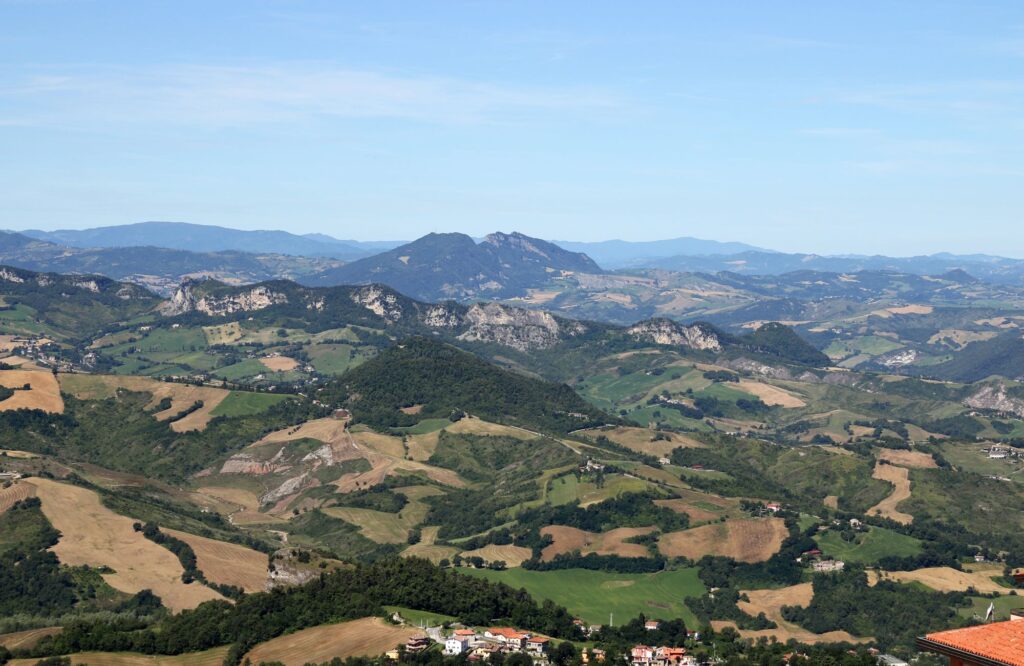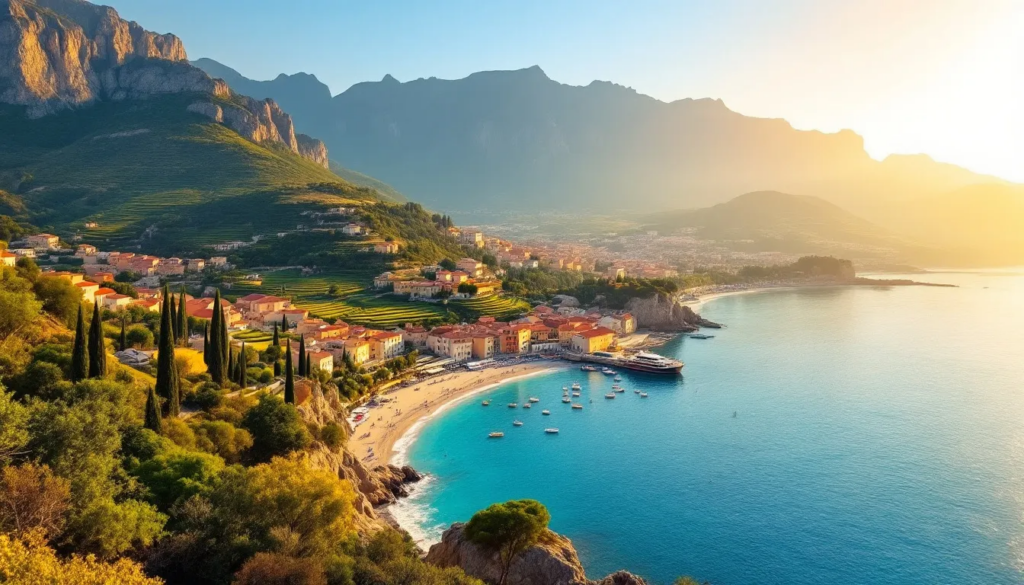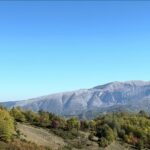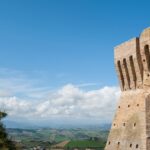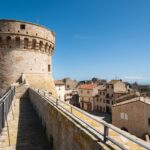The Apennine Mountains, one of the prominent Italian mountain ranges, form the rugged spine of the country, stretching more than 1,200 kilometers from Liguria in the north to Calabria in the south. As part of the interconnected mountain ranges of Europe, the Apennines are often overshadowed by the Alps, which themselves are part of the Alpine arc and the broader Alpine chain, major European mountain systems. This mountain range offers a wealth of hidden treasures, remote hiking trails, national parks, medieval villages, and vibrant cultural traditions. For travelers seeking an authentic Italian experience away from crowded tourist centers, the Apennines are a gateway to both nature and heritage.
Spanning northern, central, and southern Italy, the Apennines cross diverse landscapes, from the Tyrrhenian Sea on the west to the Adriatic on the east. The Apennine system forms a continuous chain through the length of Italy, uniting various regions and ecosystems. They are home to national parks, rich ecosystems, and some of Italy’s best food traditions. The name ‘Apennines’ shares the same name and Celtic root with other peaks and mountain ranges in Europe, reflecting a shared historical and cultural etymology. At True Colors of Italy, we embrace the beauty and heritage of the Apennines, helping travelers experience its unique geography, outdoor adventures, wildlife, and the perfect blend of culture and exploration along its scenic hiking trails.
What Are the Apennine Mountains?
The Apennine Mountains are a mountain range running the length of peninsular Italy. They connect northern Italy’s Ligurian Apennines with the southern end of Calabria, effectively forming the country’s backbone. Divided into the Northern, Central, and Southern Apennines, with Corno Grande as the highest mountain, the range influences Italy’s geography, climate, and culture. The Apennines proper refer to the main, central mountain ranges, distinguishing them from adjacent foothills and subsidiary ranges. The Ligurian Apennines, located in northern Italy, mark the beginning of the range. At the southern end, near Calabria, the Apennines reach their boundary, and some geographers include the Sicilian Apennines as an extension of the range.
The highest peak in the Apennines is Corno Grande (2,912 meters) in the Gran Sasso massif, part of the Central Apennines. It towers above the Abruzzi Apennines, marking the highest point, and is home to the Calderone Glacier, Europe’s southernmost glacier. Geologically, the Apennines consist of marine sedimentary rocks like limestone and sandstone, shaped by millions of years of tectonic activity where the European and African plates converge.
Geography and Natural Features
The Apennines cover almost the entire Apennine system, creating parallel mountain chains that divide Italy into distinct cultural and climatic regions. The western slopes form foothills along the Tyrrhenian Sea, while the eastern slopes descend toward the Adriatic coastal plain.
The terrain of the Apennines is, to a large degree, unstable, with frequent geological processes such as landslides, rock falls, earth flows, and mud flows. The region has experienced numerous historical landslides, which are a significant part of its geological history. To assess and document this instability, the Italian Landslide Inventory was created as an extensive survey, cataloging past and present landslide events throughout the mountain range.
Several important rivers originate in the Apennines, including the Tiber, Arno, and Volturno, flowing toward the Tyrrhenian Sea north, shaping valleys that connect mountain towns to larger cities. The Sibillini Mountains and Tuscan-Emilian Apennines offer dramatic peaks, while the Lucanian and Campanian Apennines dominate the south.
Major Peaks of the Northern Apennines
| Peak | Elevation (m) | Region | Best Season to Visit |
|---|---|---|---|
| Corno Grande | 2,912 | Central Apennines (Abruzzo) | Summer & Autumn |
| Monte Amaro | 2,793 | Majella Massif | Spring & Autumn |
| Monte Cimone | 2,165 | Northern Apennines (Emilia-Romagna) | Summer & Winter (skiing) |
| Monte Pollino | 2,248 | Southern Apennines (Basilicata-Calabria) | Late Spring & Early Autumn |
This rugged terrain of the Apennine Mountains in Italy not only creates breathtaking ridges and valleys but also makes the range prone to natural hazards such as landslides, a fact well documented in the Italian Landslide Inventory and extensive geological surveys. The combination of fault block systems, unstable slopes, and marine sedimentary rocks contributes to frequent movements of earth and rock, especially in areas along the eastern flanks and coastal plain, due to the interactions of the European tectonic plates. Despite these challenges, the same forces that shape the Apennine orogeny have carved out fertile valleys where vineyards, olive groves, and small farms thrive, sustaining traditional agriculture and supporting historic hill towns that have adapted to the mountain landscape for centuries.
Central Apennines Region
The Central Apennines form the dramatic heart of the Apennine mountain range, stretching across central Italy from the source of the Tiber River on Monte Fumaiolo to the Sangro River. This region is renowned for its rugged terrain, where steep eastern slopes plunge toward the Adriatic Sea and the western slopes form rolling foothills dotted with historic towns. The central Apennines are home to the highest peak in the entire range, Corno Grande, which rises majestically above the landscape and shelters the only glacier in the Apennines, the Calderone Glacier.
This section of the mountain range is divided into several notable subranges, including the Abruzzi Apennines, the Umbrian-Marchigian Apennines, and the Campanian Apennines. Each offers its own unique blend of natural beauty and cultural heritage. The area is rich in national parks, such as the Gran Sasso and Monti della Laga National Park, which protect a diverse array of Apennine fauna and flora. Here, visitors can spot rare wildlife, hike through ancient forests, and explore picturesque villages like L’Aquila, Pescara, and Chieti, each brimming with history and local charm. The central Apennines are a must-visit for those seeking both adventure and a deep connection to Italy’s mountainous soul.
Southern Apennines Section
The Southern Apennines mark the final stretch of the Apennine mountain range, extending from the Sangro River all the way to the southern tip of Italy. This region encompasses the Lucanian Apennines, Campanian Apennines, and Calabrian Apennines, each contributing to the area’s distinctive landscape. Unlike the steep and rugged terrain of the central Apennines, the southern Apennines are characterized by gentler slopes and lower peaks, making them accessible for a wide range of outdoor activities.
National parks are a highlight here, with the Pollino National Park standing out as the largest in Italy, offering vast expanses of unspoiled nature and a haven for Apennine fauna. The southern Apennines are also steeped in cultural heritage, with historic towns such as Potenza, Salerno, and Reggio Calabria providing a glimpse into the region’s rich past. Visitors can enjoy hiking, skiing, and horseback riding across the mountain range, while sampling traditional southern Italian cuisine, including specialties like lucanica sausage and pecorino cheese. The southern Apennines offer a perfect blend of natural beauty, outdoor adventure, and authentic local culture, making them a rewarding destination for travelers seeking to explore the less-traveled paths of Italy.
National Parks and Protected Areas
The Apennine mountain range is renowned for its extensive network of national parks and protected areas, which play a crucial role in preserving the region’s unique ecosystems and cultural heritage. These national parks are sanctuaries for Alpine fauna and flora, offering safe havens for rare species and pristine landscapes for visitors to explore. Among the most celebrated are the Gran Sasso and Monti della Laga National Park, the Abruzzo, Lazio, and Molise National Park, and the Pollino National Park.
Each park offers a distinct experience, from the soaring peaks and alpine meadows of the central Apennines to the wild forests and dramatic gorges of the southern Apennines. Outdoor enthusiasts can enjoy a variety of activities, including hiking, wildlife watching, and horseback riding, while also discovering traditional villages nestled within the parks. These protected areas are not only vital for conservation but also serve as living museums of the mountain range’s history, culture, and natural wonders, ensuring that the Apennine ecosystem remains vibrant for generations to come.
Long Hiking Trails and Outdoor Adventures in the Apennine Mountains
The Apennine Mountains of Italy offer something for every type of traveler, from leisurely day walks through rolling foothills to challenging multi-day treks across rugged terrain. Stretching the entire length of peninsular Italy, the Apennines form parallel mountain chains that divide regions and create diverse landscapes.
For long-distance enthusiasts, the legendary Grand Italian Trail (Sentiero Italia CAI) offers an epic journey across the entire Apennine system. This trail connects villages, parks, and summits, providing a continuous route of discovery. Additionally, trails such as the European Walking Route E1 traverse the Apennines, linking northern Europe with southern Italy, highlighting the international significance of these routes.
Key Hiking Trails
Along the Apennines, hikers can experience various landscapes, from the chestnut forests of the northern Apennines to the limestone cliffs and high-altitude ridges of the central Apennines, and the dramatic peaks and Mediterranean views of the southern Apennines. Notable trails include:
- Alta Via dei Parchi (Northern Apennines): A 500 km trail linking several regional parks.
- Gran Sasso and Laga Mountains (Central Apennines): Trails that reach Italy’s highest Apennine peaks.
- Pollino National Park (Southern Apennines): Known for its unique pines and panoramic ridges.
Many of these routes also connect major cities like Bologna, Florence, and Rome with smaller mountain towns. For example, a major trail links Bologna with other regions, making it an essential hub for both hikers and travelers. Trails range in difficulty, with options from family-friendly walks through beech forests to more strenuous climbs above the tree line.
Outdoor Adventures Beyond Hiking
Beyond hiking, the Apennines offer a variety of outdoor adventures year-round. Cyclists can enjoy winding roads through valleys, hill towns, and steep passes, many of which have featured in the famous Giro d’Italia. Mountain biking is also popular, with rugged terrain to explore in regional parks like the Tuscan-Emilian Apennines and the Sibillini Mountains.
In winter, the Abruzzi Apennines, Tuscan Apennines, and Lucanian Apennines transform into destinations for skiing and snowboarding. These diverse activities showcase the Apennines’ year-round appeal, but travelers should be prepared with proper gear, detailed maps, and awareness of changing conditions. The shifting geology and fault block systems of the mountains can make the terrain unpredictable, adding to the excitement and challenge of the region.
Skiing and Winter Sports
The Apennine mountain range transforms into a winter wonderland each year, offering a diverse array of skiing and winter sports opportunities across its rugged terrain. Popular ski resorts such as Gran Sasso d’Italia, Majella, and Sila provide well-groomed slopes for skiers and snowboarders of all abilities, complete with modern lift systems and welcoming mountain lodges. The unique geography of the Apennines, with its mix of steep ridges and gentle valleys, creates ideal conditions for both downhill and cross-country skiing.
Beyond traditional skiing, visitors can experience snowshoeing, ice climbing, and even winter hiking along long hiking trails that wind through snow-covered forests and open plateaus. The mountain villages come alive in winter, offering cozy accommodations and a chance to savor hearty local cuisine after a day on the slopes. Whether you’re an experienced winter sports enthusiast or a family looking for a scenic getaway, the Apennines’ combination of natural beauty and well-developed facilities makes it a top destination for cold-weather adventure.
Wildlife, Ecosystems, and National Parks
The Apennine Mountains of Italy are home to extraordinary biodiversity, with landscapes shifting dramatically from alpine meadows in the northern Apennines to Mediterranean scrub in the south. Vast protected areas, like the Sibillini Mountains National Park and the northern and central Apennines, safeguard delicate ecosystems dominated by forests of chestnut, oak, and beech. These habitats are home to unique Apennine fauna, including the Italian wolf, the rare Marsican brown bear, wild boar, deer, golden eagles, and numerous smaller species. This variety of flora and fauna shapes the natural character of the Apennines, making it one of the most important conservation areas in peninsular Italy. It attracts travelers who value both scenic beauty and the opportunity to witness wildlife in its natural environment.
Notable Species
- Italian Wolf: A symbol of the Apennines, recovering thanks to conservation efforts.
- Marsican Brown Bear: Critically endangered, found mainly in Abruzzo.
- Golden Eagle & Peregrine Falcon: Nesting in high cliffs and rugged terrain.
- Wild boar, deer, and chamois: Common in both northern and central ranges.
Culture, Villages, and Food Traditions
Beyond natural beauty, the Apennine Mountains of Italy preserve centuries of human history. Villages built on ridges and slopes have witnessed everything from Celtic domination in ancient times to medieval growth and Renaissance artistry in the region often referred to as the Italian boot . Towns like Ascoli Piceno, Norcia, and L’Aquila showcase architecture and traditions that survived earthquakes and centuries of change.
Cultural highlights include:
- Local products: Truffles, chestnuts, pecorino cheese, cured meats.
- Festivals: Chestnut harvest festivals in the Tuscan-Emilian Apennines.
- Craft traditions: Wool, ceramics, and artisanal foods are unique to each valley.
This connection between land and people is what sets the Apennines apart from more commercialized regions. Travelers can taste regional specialties, hike to monasteries, and stay in agriturismo lodgings, experiencing hospitality rooted in authenticity.
Cities and Resorts
Scattered throughout the Apennine mountain range are vibrant cities and charming resorts that serve as gateways to the region’s natural and cultural riches. Cities like L’Aquila, Pescara, and Chieti are renowned for their historical landmarks, lively festivals, and deep-rooted traditions, offering visitors a taste of authentic Italian life amid stunning mountain scenery. These urban centers are complemented by a network of resorts, such as Gran Sasso d’Italia and Majella, which provide a wide range of outdoor activities, from skiing and hiking to horseback riding.
The mountain range is easily navigable thanks to well-maintained roads and railway lines, making it simple for travelers to explore both bustling cities and tranquil resorts. Local cuisine is a highlight, with traditional dishes featuring fresh pasta, seafood, and regional meats, often enjoyed in family-run trattorias or during festive local events. Whether you’re seeking cultural immersion, outdoor adventure, or simply a relaxing escape in the heart of Italy, the cities and resorts of the Apennines offer something for every traveler, all set against the breathtaking backdrop of this iconic mountain range.
Best Time to Visit the Apennine Mountains
The best time to explore the Apennine range depends on the season and your travel goals:
- Spring (April–June): Mild temperatures, blooming wildflowers, ideal for hiking.
- Summer (July–August): Popular but hot; good for higher elevations.
- Autumn (September–October): Cooler weather, fall colors, truffle and wine festivals.
- Winter (December–March): Skiing in areas like the Tuscan Apennines and the Abruzzi Apennines.
Travelers should note that the southern Apennines are warmer, while the northern Apennines and central ranges experience more snow. Seasonal guides help determine whether to aim for hiking, cultural festivals, or snow sports.
Planning Your Trip to the Apennines
Reaching the Apennine Mountains in Italy is straightforward, as the range lies between major Italian cities. Visitors can:
- Fly into airports in Rome, Florence, or Bologna.
- Take railway lines that connect the Po Valley and coastal cities to inland towns.
- Rent a car to access remote villages or regional parks.
Accommodations include agriturismo stays, mountain lodges, and family-run B&Bs. Many regions also promote regional park guesthouses for eco-friendly tourism.
For non-hikers, cultural routes, scenic drives, and village stays provide rich experiences without strenuous activity. Whether exploring the Apuan Alps, Campanian Apennines, or the southern tip near Calabria, careful planning ensures a rewarding journey through Italy’s mountainous heart.
Conclusion
The Apennine Mountains in Italy embody the perfect balance of nature, history, and culture, offering travelers an authentic escape into the heart of the peninsula. Stretching across northern, central, and southern Italy, this mountain range invites visitors to hike long trails, explore national parks, discover medieval villages, and taste regional specialties that reflect centuries of tradition. Far from the crowded tourist circuits, the Apennines reveal a side of Italy where landscapes remain wild, communities are welcoming, and every season brings a new way to experience its beauty. For those seeking a journey filled with depth, discovery, and authenticity, the Apennines, as part of the same system as other prominent ranges, are truly Italy’s hidden backbone worth exploring.
Ready to explore Italy beyond the crowds? At True Colors of Italy, we create private, all-inclusive day tours that immerse you in the culture, landscapes, and flavors of the Le Marche region. Whether you’re traveling solo, as a couple, or with a small group, our handcrafted itineraries offer comfort, authenticity, and insider insight you won’t find elsewhere. Contact us today to begin planning your personalized Italian adventure.
FAQs
What are the Apennine Mountains known for?
The Apennine Mountains are known for their rugged landscapes, diverse wildlife, and cultural traditions. They serve as Italy’s natural backbone, offering national parks, historic villages, and unique food cultures that reflect the regions they cross.
What small country is in the Apennine Mountains in Italy?
The Republic of San Marino, one of the world’s smallest countries, lies within the Apennine range in central Italy. It sits atop Monte Titano and is surrounded by Italian territory.
What are the mountains in Italy called?
Italy has two major mountain systems: the Alps in the north and the Apennine Mountains running the length of peninsular Italy. The Apennines cover most of the country’s spine and reach into southern Italy.

